The difference between cooled and uncooled thermal imaging cameras
2022-03-07
Over the years, scientists, researchers and R&D experts have been keen to use thermal imaging cameras in a wide range of applications, including industrial R&D, academic research, non-destructive testing (NDT) and materials testing, as well as defense and aerospace. However, not all thermal imaging cameras have the same quality features or can be used for some specialized applications. For example, obtaining accurate measurements requires advanced thermal imaging cameras with high-speed stop-motion animation capabilities. Today, let's take a look at how to choose between cooled and uncooled thermal imaging cameras!
Cooled thermal imaging camera
State-of-the-art cooled thermal imaging cameras feature imaging detectors with integrated cryogenic refrigerators. This is a device that reduces the temperature of the detector to cooling temperature. In order to reduce thermal noise below the level of the scene imaging signal, a reduction in detector temperature is necessary.
Cooled thermal imaging cameras are the most sensitive thermal imaging cameras, detecting the smallest temperature differences between objects. They operate on spectral mid-wave infrared (MWIR) waves relative to target temperature changes. The higher the thermal sensitivity, the easier it is to detect those scene segments and long-wave infrared (LWIR) bands where the target temperature does not differ much from the background, where thermal sensitivity is physically higher. Thermal sensitivity refers to signal changes.
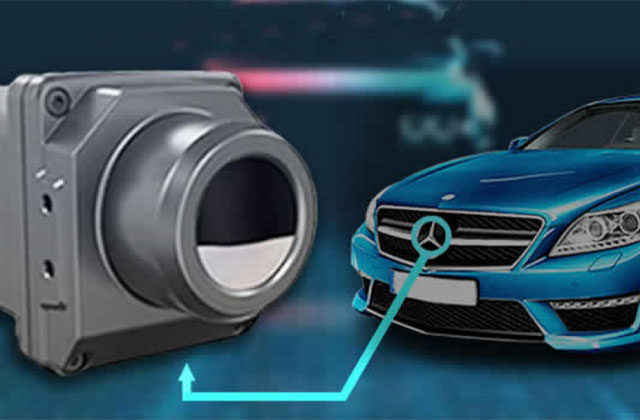
Uncooled thermal imaging cameras
An uncooled thermal imaging camera is an infrared thermal imaging camera in which the imaging detector does not require cryogenic cooling. Common detector designs are based on pyroelectric detectors, which are small vanadium oxide resistors with a large temperature measurement coefficient, large surface area, low heat capacity, and good thermal insulation. Changes in the temperature of the scene will cause the temperature of the infrared detector to change, which will be converted into electrical signals and processed to produce images.
Uncooled detectors are used in the long-wave infrared (LWIR) band, where targets with similar ground temperatures emit the most infrared heat. Compared to refrigerated detectors, uncooled detectors have fewer manufacturing steps, higher yields, lower cost of vacuum packaging, and uncooled thermal imaging cameras do not require extremely expensive cryogenic refrigerator equipment. Uncooled thermal imaging cameras have fewer moving parts and tend to have a longer lifespan than cooled thermal imaging cameras under similar operating conditions.
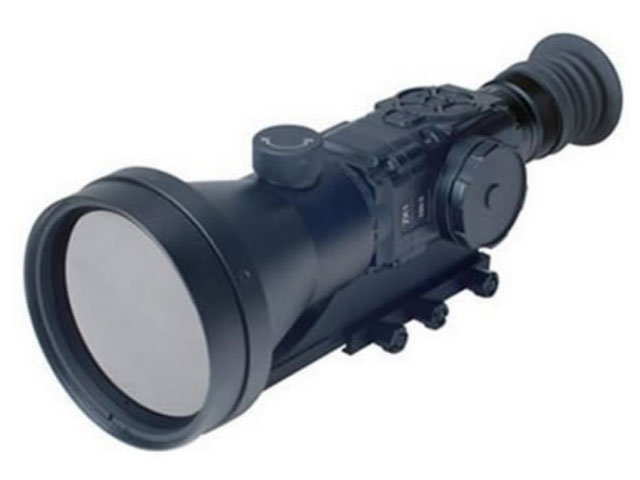
The advantages exhibited by uncooled thermal imaging cameras present a dilemma: when to use cooled thermal imaging cameras for R&D/scientific applications? The answer is: it depends on the application requirements.
Example comparison:
If you want to spot small temperature differences and need image quality, shoot fast moving or hot objects; if you need to see thermal changes clearly, or measure the temperature of very small objects; if you want to see hot objects in very well-defined parts of the electromagnetic spectrum ; Or if you want to synchronize the thermal imaging camera with other temperature measurement equipment, a cooled thermal imaging camera is the right instrument for you.
1. Speed
Cooled thermal imaging cameras can image faster than uncooled thermal imaging cameras. High-speed thermal imaging has exposure times down to microseconds, stops the apparent motion of dynamic scenes, and captures frame rates in excess of 62,000 frames per second. Applications include thermal and dynamic analysis of jet engine turbine blades, automotive tire or airbag inspection, supersonic projectiles, and explosions.
Cooled thermal imaging cameras are extremely responsive and take full advantage of the global shutter. This means they can read out all the pixels at the same time, rather than line by line like uncooled cameras, allowing cooled cameras to capture sharp images and measure the temperature of moving objects.
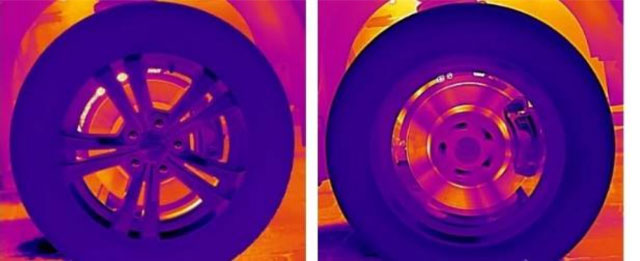
These infrared images compare shots of tires spinning at 20 mph. The one on the left was taken with a cooled thermal imaging camera. You might think the tire isn't turning, but this is the result of a cooled thermal imaging camera at extremely high speeds, which "freezes" the tire's rotation. Uncooled thermal imaging cameras are too slow to capture the moment when the tire rotates, making the spokes appear transparent.
2. Spatial resolution
The thermal images below compare the close-up magnification achievable with cooled and uncooled thermal imaging systems. The infrared image on the left was taken with a combined setup with a 4x near-focus lens and a cooled thermal imaging camera with a pixel pitch of 13μm, with a spot size of 3.5μm. The infrared image on the right was taken with a combined setup with a 1x near-focus lens and an uncooled thermal imager with a pixel pitch of 25μm, with a spot size of 25μm.

Because of the shorter sensing infrared wavelengths, cooled thermal imaging cameras typically have stronger amplification capabilities than uncooled thermal imaging cameras. Because cooled thermal imaging cameras are more sensitive, lenses with more optics or thicker elements can be used without degrading the signal-to-noise ratio, improving magnification
3. Sensitivity
The value of improved sensitivity in cooled thermal imaging cameras is often not immediately apparent. To compare the advantages of sensitivity, we performed a quick sensitivity experiment. We created a thermal image of the handprint by pressing our hand against the wall for a few seconds for comparison.
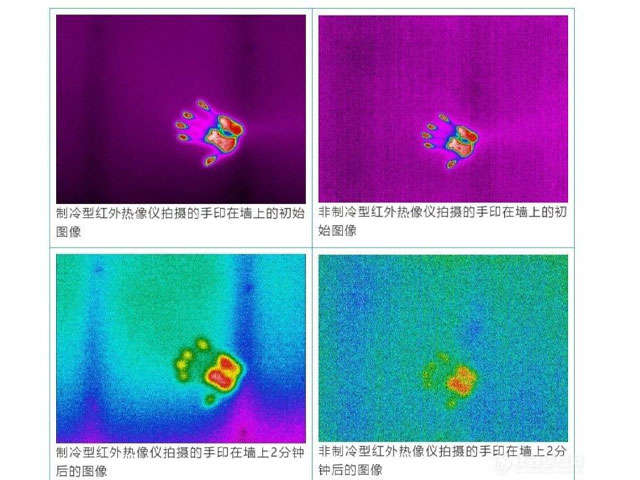
The first two images show the instant handprint of the hand being removed. The second set of images shows the thermal signature of the handprint after two minutes. You can see: Cooled thermal imaging cameras still capture most of the thermal signature of the handprint, while uncooled thermal imaging cameras only capture some of its thermal signature. Clearly, cooled thermal imaging cameras can detect finer temperature differences than uncooled thermal imaging cameras, and the detection duration is longer. What this means: Cooled thermal imaging cameras show the details of the object being measured more clearly and can help you detect the tiniest thermal anomalies.
4. Spectral Filtering
One of the advantages of cooled thermal imaging cameras is the ease with which spectral filtering can be applied to detect details and measure temperature, both of which are difficult to achieve with uncooled thermal imaging cameras.
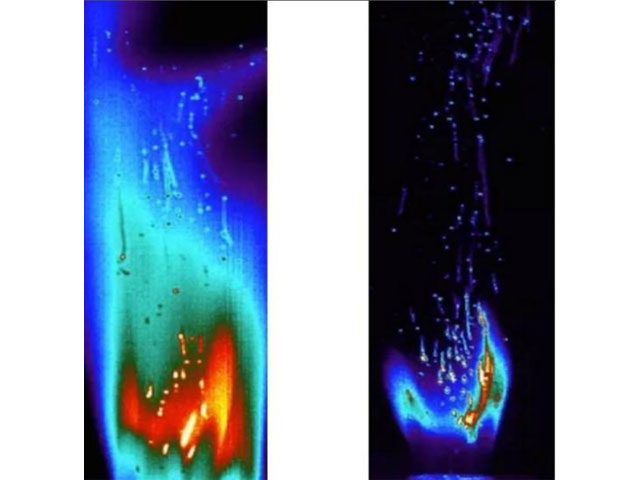
Example 1: We used a filter that was placed in the filter holder behind the lens or built into the Dewar detector assembly to allow complete imaging of the flame. In the past, end users have wished to measure and characterize the combustion of coal particles within a flame. With the "see through flame" spectral IR filter, we have filtered the cooled thermal imaging camera in the spectral band where the flame is penetrating, allowing us to image coal particles. Figure 1 is an image taken without the flame filter, all we see is the flame itself. The second picture is an image taken with a flame filter, and we can clearly see the coal particles burning.
5. Sync
Precise camera synchronization and triggering make the camera ideal for high-speed, high thermal sensitivity applications. Working in snapshot mode, the MH6100B is able to capture all pixels in thermal activity simultaneously. This is especially important when monitoring fast-moving objects, where standard uncooled thermal imaging cameras can blur the image.
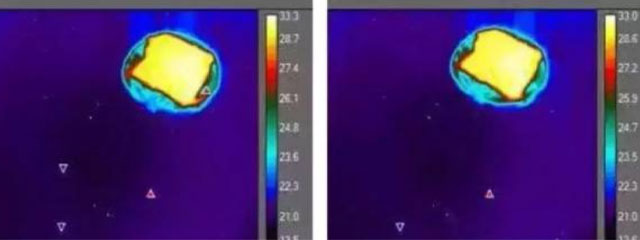
The image in the figure is a good example. In this example, we drop a coin and the sensor triggers the thermal imaging camera to take an image. Toss the same coin twice, trigger the thermal imaging camera at the same time, and you'll see the object in the same position each time. With an uncooled IR detector thermal imaging camera, you can't catch coins at all because it can't trigger this type of detector. If you're unlucky, the image may be blurry.
Thermal imaging cameras with cooled detectors have several advantages over thermal imaging cameras with uncooled detectors, but they are more expensive.
 tel
tel






